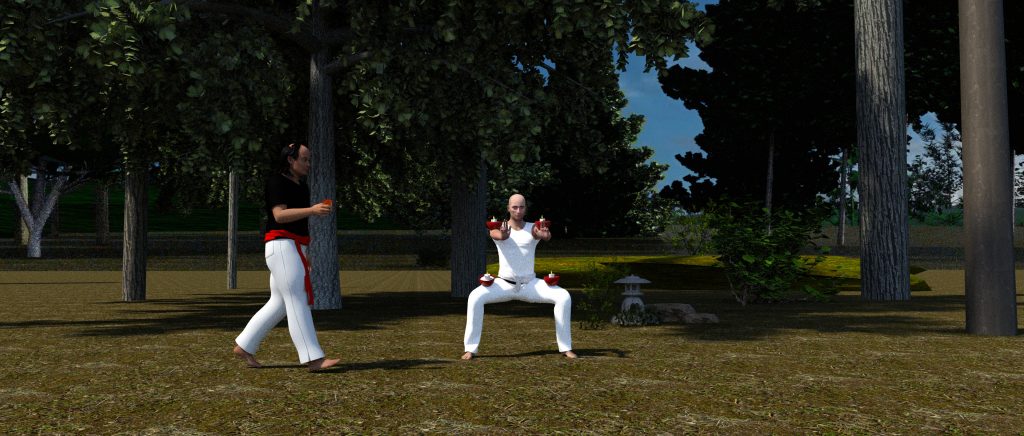Whenever you’re planning on shooting a film digitally, you need to figure out what resolution you want to shoot at. Now that digital cinema has almost been around for two decades, there are more options available than ever. 2K, 4K, even 8K resolutions are possible.
Originally, the highest definition you could get was 1080p, or a screen size of 1080 pixels wide. That was top of the line with video — and the original HiDef video was 720p. When 4K made its debut, that pushed the horizontal resolution to 3840 pixels by 2160 — making the amount of detail onscreen to rival that of celluloid film.
There are a few advantages to this format , the main one being that it looks great on a big screen. The resolution also makes it possible to digitally “punch-in” for a closeup on a shot, in order to get 2 shots out of one setup. Keep in mind that this technique works mainly when delivering the final project in 1080p. Punching in on a 4K image while keeping the output at 4K will slightly blur the image, much like when you try to take a small JPEG and blow it up to fill an 8×10 page.
But does 1080p look bad on a big screen? Having acted in many independent films, and having attended many premieres of said projects, I’ve seen lots of indie work on a big screen — some of it looked fantastic, and some not so hot. But that was mainly due to the cinematography, lighting and color grading (or lack thereof). A 1080p digital film projected on a standard multiplex cinema screen just looks slightly grainier than a sharp 4K (or higher) film.
My “survival job” for the past 10 years (aka “day job” that pays the bills) was doing the payroll accounting for the US portion of cast & crew on the HBO series Game of Thrones. So I worked a lot with the Visual Effects crew and post production crew. At the most recent Emmy screening after-party for Season 8 Episode 3 The Long Night, I spoke with several of the VFX guys who also informed me that a projected image looks much better than it does on a monitor. Since the light travels through the air to hit the screen, flaws in the image don’t show up as much and it’s easier to have that cinematic quality. (Probably explains why I thought the episode looked great while many home viewers complained they couldn’t see it!)
So what format would I want to use to shoot Cyber Fighter? Ideally, I would want to shoot in 4K, even if the finished product ends up in 1080p for online delivery. It’s always better to scale down than try to scale up.
At this point in time, the film is half-completed. There is an animated sequence in the short film depicting my character in the Virtual Reality training interface. These scenes have already been animated and rendered out frame by frame — thousands of images to be played back at 24 frames per second. I rendered them all in 4K, which is what took most of the past several months going back to late 2018. The live action scenes have yet to be filmed; these are what I need to have a budget for. The animation was a one-man operation and just time consuming instead of expensive. But the main movie will need the rest of the cast and a whole crew to pull off.

Shooting in 4K will need a larger budget than 1080p, as we’ll want to rent a cinema camera along with a professional DP who can also operate it. But if we can’t hit the intended budget numbers, then getting a low-cost 1080p DSLR camera will be a feasible alternative. Though, at the time of this writing, 4K cameras are coming down in cost, and the relatively new Blackmagic Pocket Cinema camera is a fraction of the cost of a 4K cinema camera and delivers roughly the same quality. Recently, Blackmagic has released a 6K version of the camera too, so that will probably help bring the 4K cost down.
With the Blackmagic Pocket cinema camera being as small as it is, even when fully rigged, it will still be lightweight enough to attach to a gimbal rather than a huge steadicam rig, which will allow quicker setups and still be able to get fluid motion without needing dolly track. Ideally if we can plan to use a small mobile 4K camera like this, with smooth moving shots (no jerky handheld), it will make the anticipated 4 day shooting schedule more feasible.
As we head into the Holiday season, I will be moving forward with more work towards the short film, in addition to continued promotion of my book on Amazon. Goodreads just recently picked up the listing for Cyber Fighter so that’s an exciting development. Happy Thanksgiving!